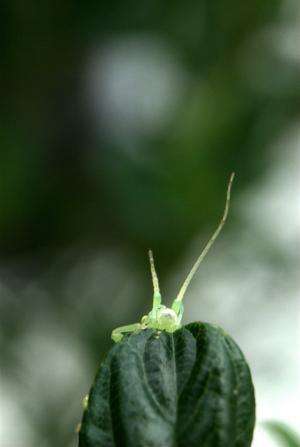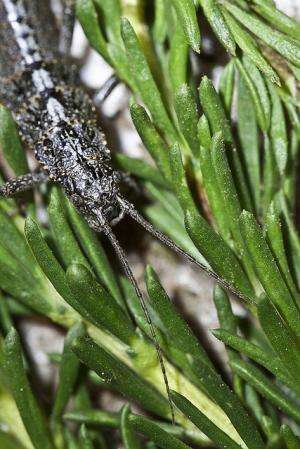Sexless for a million years, stick bugs elude extinction

(PhysOrg.com) -- Simon Fraser University biologists say a species of stick insect found to be celibate for 1.5 million years raises questions about why these particular lineages have escaped extinction thus far.
In a paper published in the journal Current Biology, SFU biology professor Bernie Crespi and Tanja Schwander, a former post-doctoral researcher in Crespi’s lab, say the persistence of the insect, known as the genus Timema, is most likely because of a combination of genetic and ecological processes.
The researchers used a series of genetic analyses to show that several clonal or cloned lineages in the stick insect, mainly found in the western U.S., have persisted for more than one million generations. The finding raises questions around why they’ve eluded extinction to date and has allowed researchers to address the consequences of long-term clonality.
“Why most species reproduce sexually is a big question in evolutionary biology, because at least theoretically, it appears that clonal reproduction would be more efficient,” says Schwander, currently a fellow in evolutionary genetics at the University of Groningen, in the Netherlands.

“Many genetic and ecological mechanisms have been suggested that could result in disadvantages of clonal reproduction. One common expectation of these mechanisms is that reproductive advantages gained by new clonal lineages will be quickly eroded over time.”
Their genetic studies led the researchers to determine the last point in time the insect line engaged in sex. Their findings add to the growing evidence that asexuality does not always result in the rapid extinction of a lineage and are the basis of their ongoing research.
More information: Molecular Evidence for Ancient Asexuality in Timema Stick Insects, Current Biology, Volume 21, Issue 13, 1129-1134, 16 June 2011
Summary
Asexuality is rare in animals in spite of its apparent advantage relative to sexual reproduction, indicating that it must be associated with profound costs. One expectation is that reproductive advantages gained by new asexual lineages will be quickly eroded over time. Ancient asexual taxa that have evolved and adapted without sex would be “scandalous” exceptions to this rule, but it is often difficult to exclude the possibility that putative asexuals deploy some form of “cryptic” sex, or have abandoned sex more recently than estimated from divergence times to sexual relatives. Here we provide evidence, from high intraspecific divergence of mitochondrial sequence and nuclear allele divergence patterns, that several independently derived Timema stick-insect lineages have persisted without recombination for more than a million generations. Nuclear alleles in the asexual lineages displayed significantly higher intraindividual divergences than in related sexual species. In addition, within two asexuals, nuclear allele phylogenies suggested the presence of two clades, with sequences from the same individual appearing in both clades. These data strongly support ancient asexuality in Timema and validate the genus as an exceptional opportunity to attack the question of how asexual reproduction can be maintained over long periods of evolutionary time.
Provided by Simon Fraser University

















